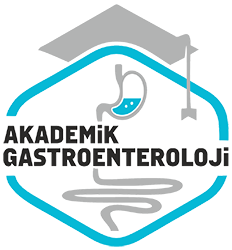Aralik 2024
Epiploik apandisit, günlük pratikte gözden kaçırılan acil bir durum
Epiploic appendagitis, an overlooked emergency in the daily practice
- Ana Sayfa
- Sayılar
- Aralik 2024
- Epiploik apandisit, günlük pratikte gözden kaçırılan acil bir durum...
Özet
ÖZET • Giriş ve Amaç: Akut epiploik apandışıt, akut karın ağrısınin nadir ve kolayca yanlis teshis edilen bir nedenidir. Epiploik apandışıt tanısı, hasta yönetiminde açik klinik öneme sahiptir. Radyoloji, cerrahi gerektiren birçok akut patolojiyi taklit eden bu durumun teshisinde önemli bir role sahiptir. Bu çalışmanın amacı hasta popülasyonumuzda epiploik apandışıt tanı orani ile prezentasyonunu belirlemek ve bu kendini sinirlayan antiteyi hatirlatmaktir. Gereç ve Yöntem: 2022-2023 yıllari arasında acil servise akut karın ağrısı şikayetiyle basvuran ve batin bilgisayarli tomografi ile değerlendirilen eriskin hastalar retrospektif olarak incelendi. Hastalar akut karinin sik görülen nedenlerine göre gruplandirildi. Epiploik apandışıtlerin sikligi ve yaygin belirtileri arastirildi. Bulgular: Bir yıllik retrospektif radyoloji veri tabani araştırmasinda, 256 hastanın sekizinde (%3,12) bilgisayarli tomografi bulgulari epiploik apandışıt ile uyumluydu. Bu Hastaların anamnezleri, fizik muayeneleri ve laboratuvar bulgulari geriye dönük olarak incelendi. Sonuç: Epiploik apandışıt, akut karinin nadir fakat kendi kendini sinirlayan bir nedenidir. Akut karın ağrısınin yönetiminde gereksiz cerrahi müdahalelerden kaçinmak için, acil servis hekimleri ve radyologlar bu klinik durumu da hatirlamalidir.
Abstract
ABSTRACT • Background and Aims: Acute epiploic appendagitis is an uncommon and easily misdiagnosed cause of acute abdominal pain. The diagnosis of epiploic appendagitis has clear clinical importance in patient management. Radiology has an important role in diagnosing this condition, which mimics many acute pathologies requiring surgery. The aim of this study is to determine the frequency and presentation of acute epiploic appendagitis in our patient population and to remind this self-limiting entity. Materials and Methods: Adult patients applied to the emergency department with acute abdominal pain and were evaluated with abdominal computed tomography between 2022-2023 were retrospectively analyzed. Patients were grouped according to the common causes of acute abdomen. The frequency and common presentation of epiploic appendagitis were researched. Results: In the one-year retrospective radiology database search, computed tomography findings were consistent with epiploic appendagitis in eight (3.12%) of 256 patients. The anamnesis, physical examination, and laboratory findings of these patients were examined retrospectively. Conclusion: Epiploic appendagitis is a rare but self-limiting cause of acute abdomen. In the management of acute abdominal pain, emergency physicians and radiologists should also remember this clinical situation in order to avoid unnecessary surgical interventions.



